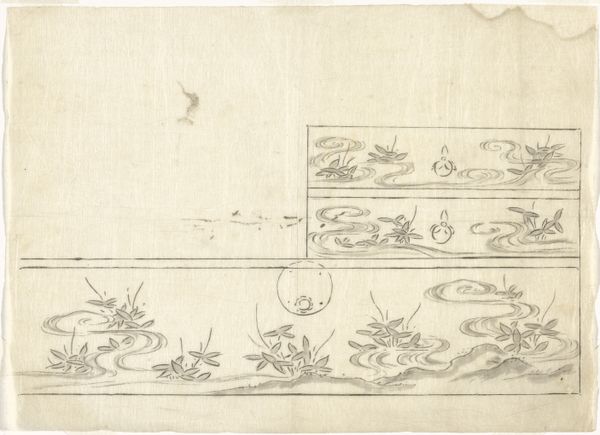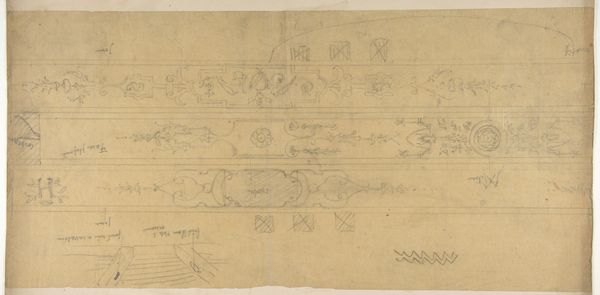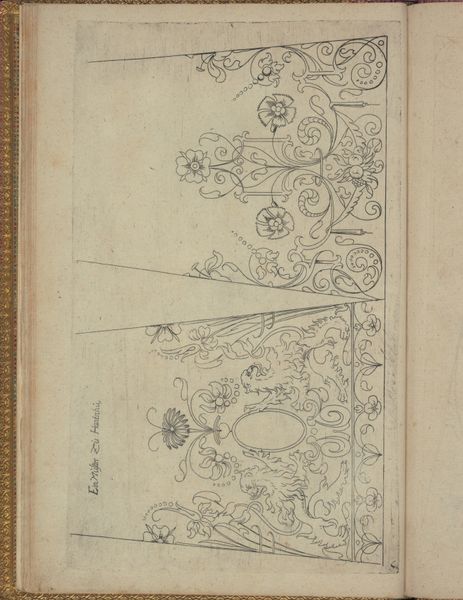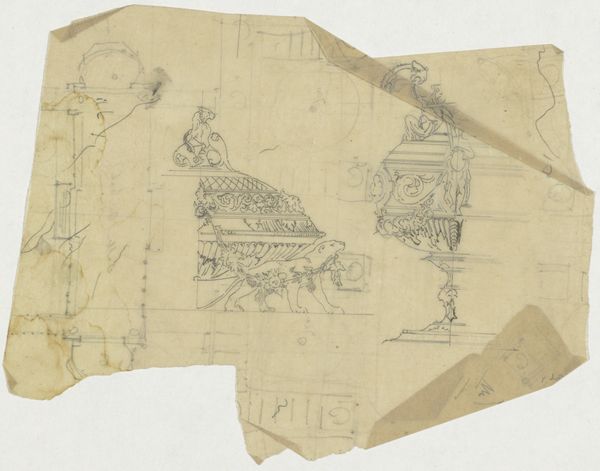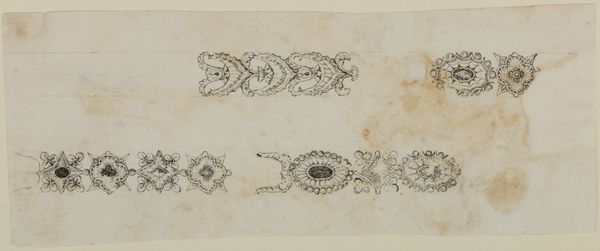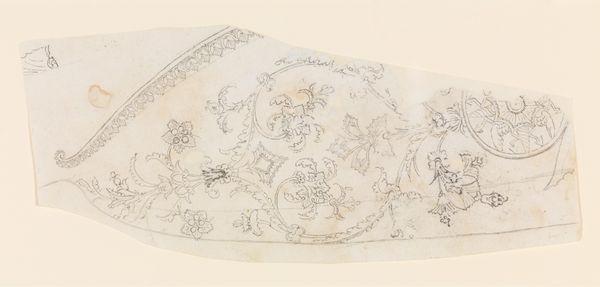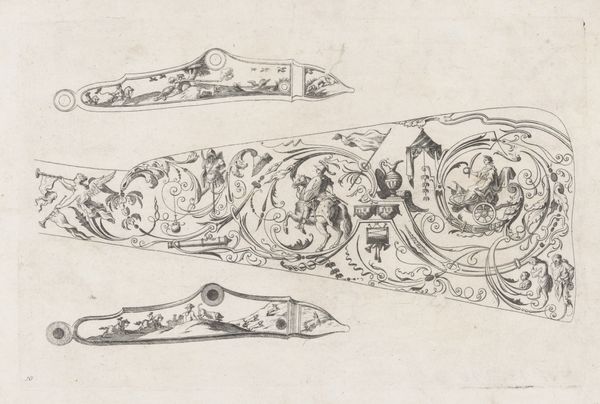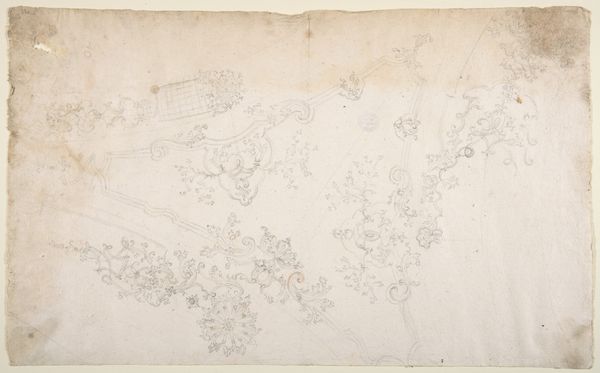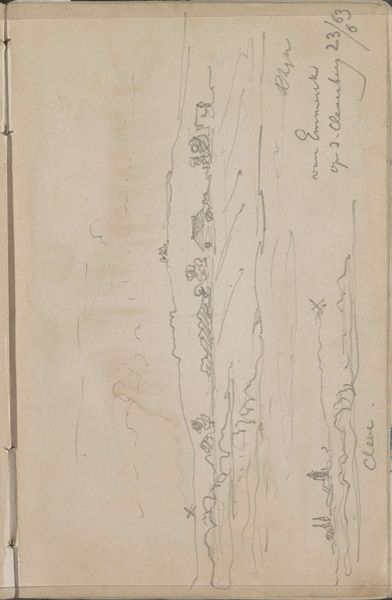
Design for the Decoration of the Barrel of a Firearm 1772 - 1830
0:00
0:00
drawing, ornament, paper, pencil, engraving
#
drawing
#
neoclacissism
#
ornament
#
etching
#
paper
#
pencil
#
history-painting
#
engraving
Dimensions: 11 1/4 x 3 1/4 in. (28.6 x 8.3 cm)
Copyright: Public Domain
Editor: So this is "Design for the Decoration of the Barrel of a Firearm" by Nicolas Noël Boutet, dating from 1772 to 1830. It's a pencil, etching and engraving on paper. It’s amazing to see such delicate work intended for something as violent as a firearm! What are your thoughts on the relationship between the art and its purpose? Curator: That tension you observe is quite revealing. Consider the Neoclassical period in which Boutet was working. There's a return to classical forms, ideas of order and reason… placing this refinement onto instruments of war attempts to legitimize, even ennoble, their use. Think of it as projecting power through beauty and control, not just brute force. The gun itself becomes a symbol laden with political and social messaging. Editor: That’s fascinating. So the aesthetic serves to mask, or perhaps reframe, the reality of warfare. But who was the intended audience? Was it simply the owner of the firearm? Curator: I think the audience is broader. The elite who owned these firearms, of course, but also the wider public. The display of such ornamented weapons reinforced a certain social hierarchy and the state’s capacity to mobilize force. Think about the institutional frameworks that supported this—Boutet was, after all, director of the Versailles arms factory. These weren't just individual artistic statements. They were embodiments of state power. Editor: That makes so much sense! I hadn't considered the connection to Versailles and the larger political statement. Curator: And think about the way these images circulate today, safely framed in a museum. Are we still susceptible to the same subtle messaging? How does the context of display change our understanding? Editor: It's pretty amazing how relevant these historical objects can be today. I'll definitely be thinking about that tension you pointed out in everything I see from now on! Thanks! Curator: Absolutely. It’s that critical engagement with the past that makes art history so rewarding.
Comments
No comments
Be the first to comment and join the conversation on the ultimate creative platform.
